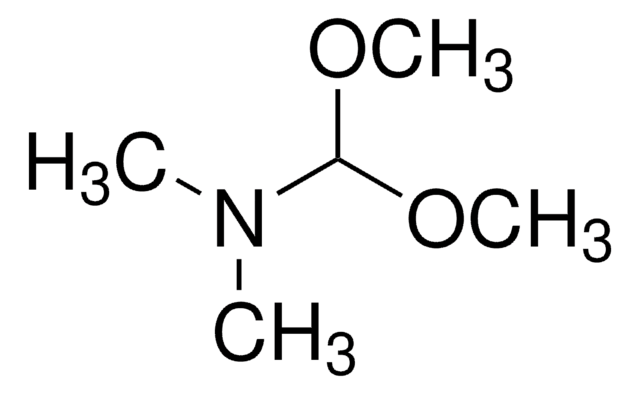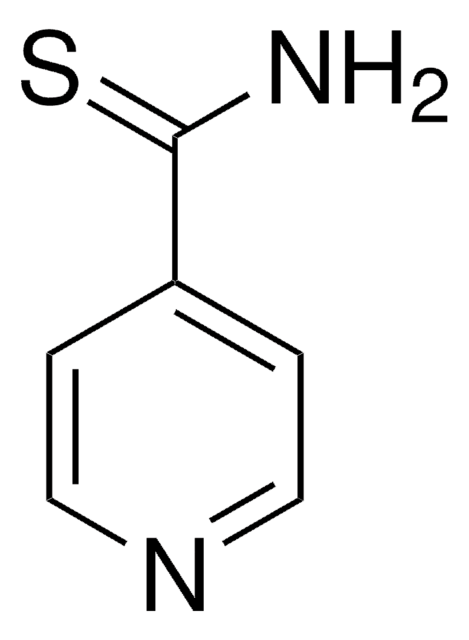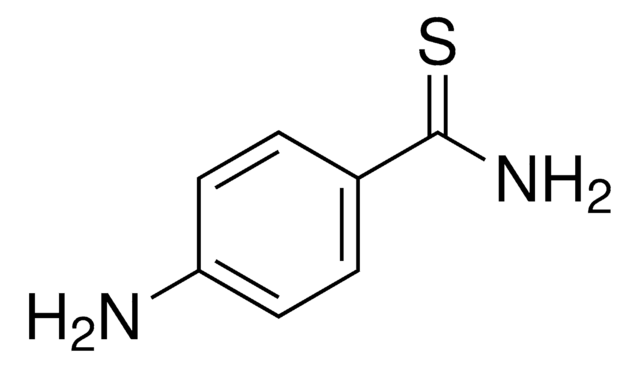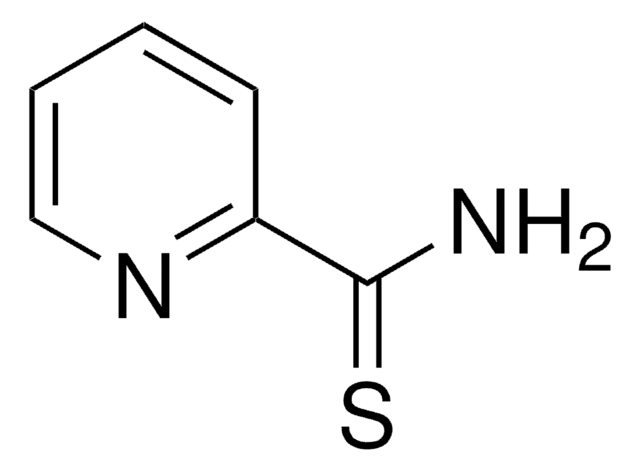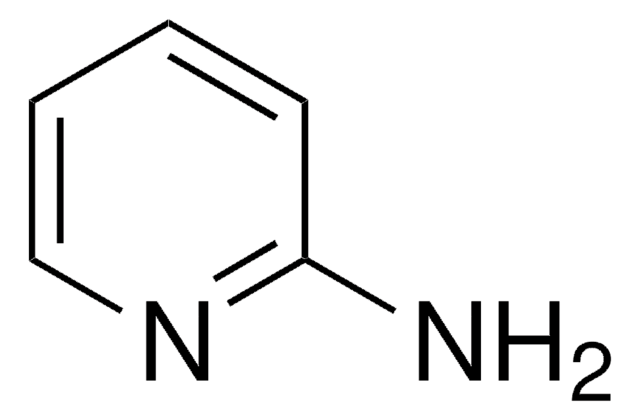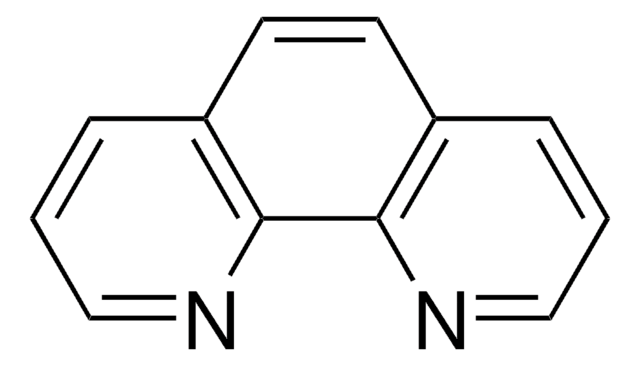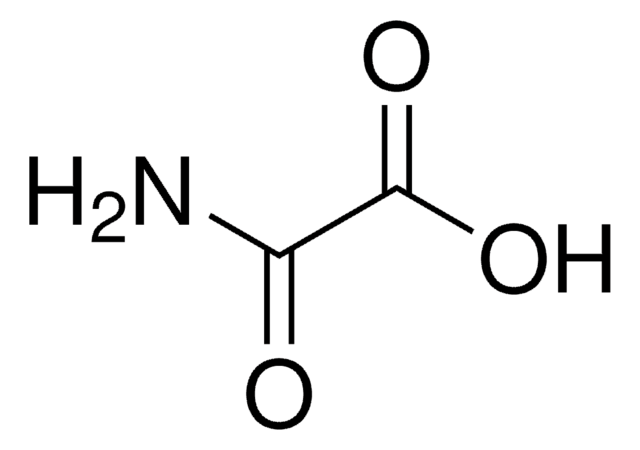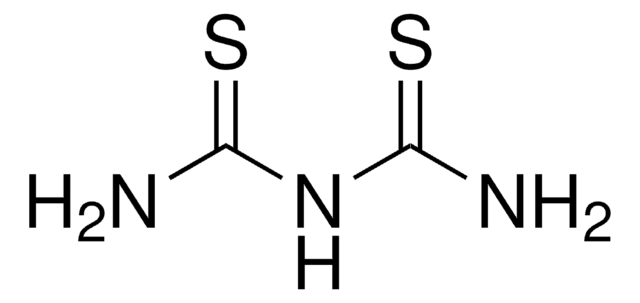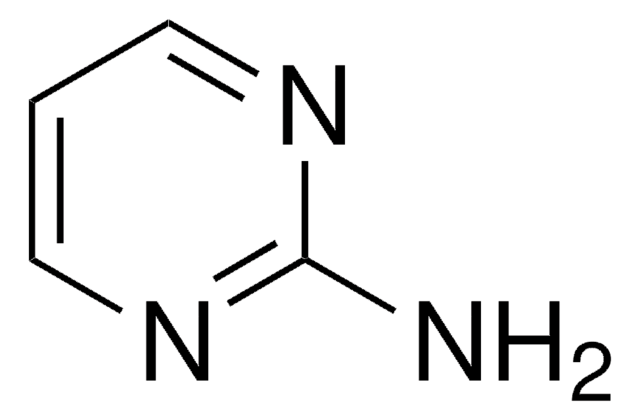All Photos(1)
About This Item
Linear Formula:
C6H5CSNH2
CAS Number:
Molecular Weight:
137.20
Beilstein:
606021
EC Number:
MDL number:
UNSPSC Code:
12352100
PubChem Substance ID:
NACRES:
NA.22
Recommended Products
Assay
98%
mp
113-117 °C (lit.)
functional group
amine
phenyl
SMILES string
NC(=S)c1ccccc1
InChI
1S/C7H7NS/c8-7(9)6-4-2-1-3-5-6/h1-5H,(H2,8,9)
InChI key
QIOZLISABUUKJY-UHFFFAOYSA-N
Looking for similar products? Visit Product Comparison Guide
Application
Thiobenzamide was used to prepare amide and amidine adducts. It was also used in the synthesis of 4-oxo-4H-chromene-3-carbothioic acid N-phenylamides.
Signal Word
Danger
Hazard Statements
Precautionary Statements
Hazard Classifications
Acute Tox. 3 Oral
Storage Class Code
6.1C - Combustible acute toxic Cat.3 / toxic compounds or compounds which causing chronic effects
WGK
WGK 3
Flash Point(F)
Not applicable
Flash Point(C)
Not applicable
Personal Protective Equipment
dust mask type N95 (US), Eyeshields, Gloves
Choose from one of the most recent versions:
Already Own This Product?
Find documentation for the products that you have recently purchased in the Document Library.
M M Simile et al.
Carcinogenesis, 17(7), 1533-1537 (1996-07-01)
S-Adenosyl-L-methionine (SAM) is a strong chemopreventive agent of rat liver carcinogenesis. Examination was made to determine whether inhibition by SAM of the development of preneoplastic liver lesions persists to SAM withdrawal in diethylnitrosamine-initiated F344 rats promoted with thiobenzamide (TB). The
W G Chung et al.
Molecules and cells, 7(6), 738-741 (1998-03-24)
Flavin-containing monooxygenase (FMO), known not to be induced by xenobiotics, has been induced by a polycyclic aromatic hydrocarbon, 3-methylcholanthrene (3MC). We have found a prominent augmentation of hepatic FMO1 both at transcription and translation levels by pretreatment of rats with
J M Domagala et al.
Drug design and discovery, 15(1), 49-61 (1997-05-01)
Substituted 2,2'-dithiobisbenzamides and 2-benzisothiazolones were prepared and shown to possess low microM activity with high therapeutic indices against HIV-1, HIV-2 and SIV in cell culture. The mechanism of antiviral action was determined to be directed toward the nucleocapsid protein (NCp7)
D R Doerge et al.
Biochemistry, 30(37), 8960-8964 (1991-09-17)
The mechanism of organosulfur oxygenation by peroxidases [lactoperoxidase (LPX), chloroperoxidase, thyroid peroxidase, and horseradish peroxidase] and hydrogen peroxide was investigated by use of para-substituted thiobenzamides and thioanisoles. The rate constants for thiobenzamide oxygenation by LPX/H2O2 were found to correlate with
M Saracoglu et al.
Journal of biomedicine & biotechnology, 2010, doi:10-doi:10 (2010-09-28)
The structure anti-influenza activity relationships of thiobenzamide and quinolizidine derivatives, being influenza fusion inhibitors, have been investigated using the electronic-topological method (ETM) and artificial neural network (ANN) method. Molecular fragments specific for active compounds and breaks of activity were calculated
Our team of scientists has experience in all areas of research including Life Science, Material Science, Chemical Synthesis, Chromatography, Analytical and many others.
Contact Technical Service